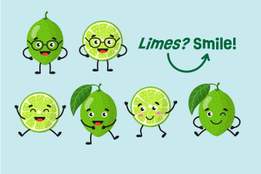A preposition is a word—and almost always a very small, very common word—that shows direction, location, or time, or that introduces an object.
I sent a letter to you. (To is a preposition showing direction)
Someone is at the door. (At is a preposition showing location)
We will arrive by noon. (By is a preposition showing time)
She brought a basket of apples. (Of is a preposition introducing the object, apples)
Prepositions are typically followed by an object, which can be a noun (noon), a noun phrase (the door), or a pronoun (you).
There is nothing wrong with ending a sentence in a preposition like to, with, for, or at. English speakers have been doing so since the days of Old English. The people who claim that a terminal preposition is wrong are clinging to an idea born in the 17th century and that has been largely abandoned by grammar and usage experts for more than a hundred years.
Here are some examples of a sentence written with a preposition (about) at the end, and with the preposition moved to the middle. Read them out loud and you can hear how the preposition works better at the end of the sentence.
This is the fake grammar rule I was telling you about.
This is the fake grammar rule about which I was telling you.
Other parts of speech:
What is an adjective?
What is an adverb?
What is a noun?
What is a verb?




